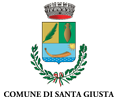Discover Romanesque: Peoples and Legends
Sigeric of Canterbury
Sigeric was the archbishop of Canterbury, England, from 990. In that year, he made a pilgrimage to Rome and, on his way back, described the 79 stopovers he had done in a journal. His Itinerary represents the first complete description of the later well-known Via Francigena, one of the main medieval pilgrimage tracks. The Italian part of the route, leading from transalpine countries to Rome, completed the full itinerary that, from Santiago of Compostela, Galicia (the burial place of James the apostle) reached Rome, going on towards Brindisi to board for the Holy Land and Jerusalem. This route should not be considered as a true road, but rather as a network of possible tracks connecting the three key places of worship (Santiago, Rome and Jerusalem), each of them including minor places for pilgrims to stay and find material refreshment – at the numerous hostels risen along such tracks – and spiritual comfort, thanks to the presence of further relics. For that reason, Lucca represented a most significant stopover in this sense, owing to the presence of the Holy Face.
The 27th stopover of Sigeric’s Itinerary, past Lucca and before Luni, is represented by Camaiore (Campmaior in the text).
























